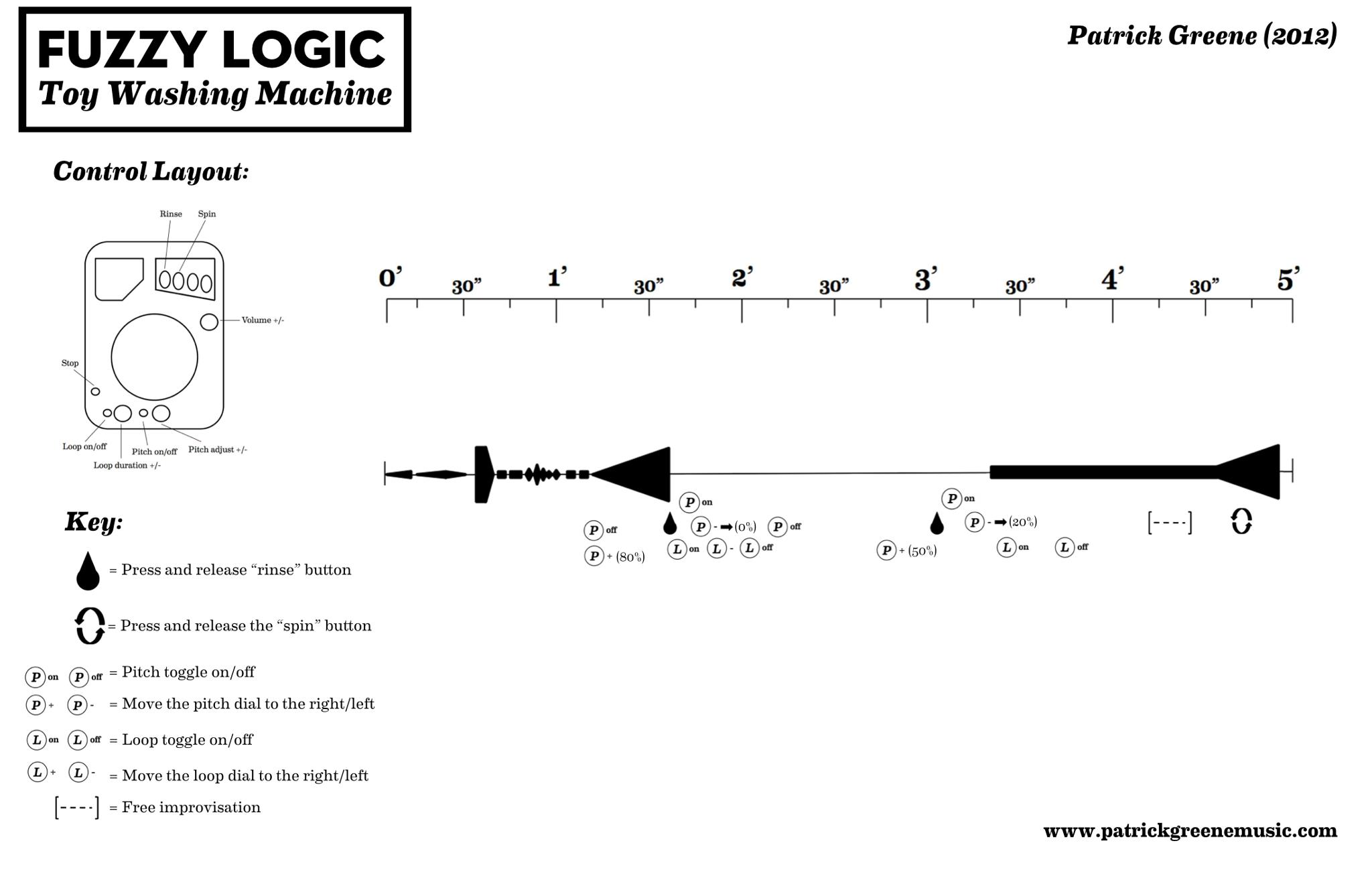The FFC/Transient Canvas concert went really well! Here's some video of the first movement of my premiere, Charles & Ray, performed by Transient Canvas (Matt Sharrock and Amy Advocat). I'll get the second movement uploaded at some point, too, so stay tuned. :)
Filtering by Category: Compositions
Program Note: Charles & Ray (2013)
Here's the program note for Charles & Ray, a piece I recently composed for Transient Canvas. It'll be premiered on March 15, 2013 at the Lily Pad Gallery in Cambridge, MA, during the second concert of the Fifth Floor Collective's third season.
A couple of years ago, my wife and I brought home a chair. It was canary yellow, all spindles and curves, a fiberglass profusion perched on steel-and-maple rockers. It looked like the way laughter feels. It was born sometime around 1950, in Zeeland, Michigan, at the Herman Miller factory. It was designed by team of young, wide-eyed designers in Venice, Los Angeles, in a little building that was once an automobile garage, but which was now a crazy, wild thing, filled with circus paraphernalia and toy-train sets and music and sheets of plywood bent into shapes that, five years earlier, could only have existed in dreams, or maybe on paper.
The leaders of the team were a husband and wife, and their names were Charles and Ray Eames.
They’d met and fallen in love about a decade earlier when both were students at the Cranbrook Academy of Art. They were an unlikely pairing—for one thing, Charles was married at the time—but they completed each other. He was studying to become an architect, she was training as an Abstract Expressionist painter; he was charismatic and brimming with loudly-voiced curiosity, she preferred to quietly observe, taking in the world and missing none of it. But she brought color and texture to his modernist aesthetic, and he created new canvases for her work in wild shapes and of novel materials, canvases which, given the affluence of post-WWII America, became parts of daily life in homes across the country.
Charles & Ray, written for the virtuosic clarinet/percussion duo Transient Canvas, is a little character study of its titular subjects. The first movement, “St. Louis,” is named for Charles’ birthplace, and attempts to capture his aesthetic essence in sound. Little bits of sonic data—stacked fourths, a rising major-third melodic fragment, a polyrhythmic snippet—are combined and modified throughout. To Charles, good design evolved from the unique properties of the materials of its construction. The materials in “St. Louis” are always individually identifiable, but new forms emerge from their combining.
The second movement, ”Sacramento” (named, as you might imagine, for Ray’s place of birth) is quite different. The extensive use of microtonally inflected pitch material lends a sense of otherworldliness, as do the clarinet’s plaintive multiphonics. Ray’s work was characterized by her incredible sense of color, and the music of the second movement attempts to coax out chromatic gradations of its own: not just of the timbres of these two instruments, but within the space and time of the music itself.
I’ll end with a little story. The original prototype of that canary-yellow rocking chair in our living room was, according to legend, a surprise gift to a new mother on the Eames’ staff. They wanted her to be able to rock her newborn to sleep in comfort, security, and modernity. It then evolved into something of a tradition in the Eames Office, and many Office-affiliated parents were given RARs when they brought new life into the world.
My wife and I are expecting our first child this August. This chair—our chair, born in that factory on the shores of Lake Michigan, designed in that garage at the top of a hill overlooking the Pacific, this physical artifact of the unique love between these two people I’ll never meet, who died years before I knew what a chair even was, this object that made its way, over six decades, to a store in Boston where you can dip your feet into the Atlantic from the parking lot—will be the first chair in which we rock our baby to sleep. I hope that a century from now, when we’re gone, some young couple will wander into a design-history store, see a little yellow chair that reminds them of laughter, and decide to bring it home. I hope their children, whom they’ve rocked to sleep on that very chair, will wonder where it came from, who designed it, if it was a relic of the past or something sent to earth from the future.
And I hope they decide to write some music about it.
Video from FUZZY LOGIC (2013)
Alright, this is likely the last I'll be writing on this particular piece for a while. It was premiered at the third-season-opener for the Fifth Floor Collective on Friday, and it went really, really well! I think the audience genuinely enjoyed it. I'm so lucky that Andrew Paul Jackson and Ben Runyan were such good sports about playing it, and each brought a good deal to the performance.
The concert, as a whole, was probably my favorite of all the FFC concerts we've put up so far. The program was wonderfully varied and interesting, the audience was receptive and diverse, and the whole thing had that feeling of relevance and newness for which we so often strive as a consortium. It really was a wonderful time.
Score preview: FUZZY LOGIC (2013)
The premiere is tomorrow! It's kind of liberating to have absolutely no clue how this piece will turn out. Here's the part for the Toy Washing Machine player (click to enlarge).
Program Note: FUZZY LOGIC (2013)
(Check it out! Hope to see you there Friday.)
Program Note: Fuzzy Logic
One night several years ago, having waded out into the far reaches of Wikipedia, I found myself struck by the inexplicable urge to find out what happened to the Furby. I had one when I was younger—it was black and white, I believe—and I remember being fascinated by it. I was thirteen when Furby-mania hit the United States, which meant that I was just young enough to want a stuffed animal for Christmas but just old enough to understand (and be enthralled by) its engineering. It was a remarkable little thing.
It also had some sort of prion disorder that prevented it from sleeping, apparently. It wound up in a crate in our basement.
Anyway, back to that night several years ago: I scanned the Furby page on Wikipedia and saw the usual, mind-boggling statistics. Forty million sold in the first three years. Co-invented by a former street mime. What “wee-tah-kah-loo-loo” means (“tell me a joke”). Towards the end of the article was a brief aside: Furbys had become popular within the “circuit bending” community.
I clicked the “circuit bending” link and fell down the proverbial rabbit hole.
Circuit bending was born in the 1960s when Reed Ghazala, a teenager with no formal technical training, accidentally dropped a metal screw onto the exposed circuit board of an old Radio Shack amp that’d been left on. The resultant shriek intrigued him, and his experimentations yielded instruments, which yielded performances, which yielded colleagues, which yielded a movement.
“Bent” devices are essentially toys, instruments, and electronic appliances that have been disassembled, modified, and reassembled in ways that produce new sounds unintended by their original manufactures. There are hundreds of modifications a circuit bender can make—some of the most common are toggle and pushbutton switches (to connect/disconnect circuits), resistors and potentiometers (to resist current, thereby changing the pitch of a sound and/or protecting sensitive components), and capacitors (storing and releasing electrical current, often used to modify the tone of a sound). These electrical components are then soldered to the circuit board at various points, often located by trial and error (I used tiny alligator clips). If you can keep the current flowing at sustainable levels, you can basically have a fully functioning, long-lived device that works completely normally until you push a button or flick a switch.
The title of my piece, Fuzzy Logic, is a reference to three things. First is the concept of “fuzzy logic,” a many-valued form of logic that uses approximate reasoning in which variables can have truth-values between 0 and 1. It’s been used in various disciplines over the last half-century or so, allowing robots to behave more naturally and trains to run more smoothly. It basically allows for an amount of uncertainty within a system—much like circuit bending, where one may control variables only to a point. After that point—which is impossible to predict—the variables are governed only by chance. This piece doesn’t actually adhere to any fuzzy-logic principles, mind you, but the goals are similar—seeking control in a sea of chaos.
The title’s second meaning is simply a reference to the fact that Furbys are furry, and rather adorable.
The final reason I titled the piece Fuzzy Logic is that it was outrageously difficult to complete, and undertaking it was probably a bad idea (at least without having a couple of years’ worth of electrical engineering experience). I had to learn everything from the ground up, and it turns out I’m really, really bad at soldering barely-visible wires to contact points. I’ve now got a veritable graveyard of burned electronics components in our apartment (my wife is very patient). Luckily, I was able to get some help online—a couple of the instruments you’ll see were purchased on eBay from considerably more gifted benders than I (especially “GhostFire Electronics”). Another difficulty, as one might imagine, was notating the piece. Because of its inherent randomness, I used temporal, graphical notation. I created a “tape” track by recording the instruments and processing them, and over that placed snippets of a radio interview with the co-inventor of the Furby, Caleb Chung.
This has been a crazy experience—but aren’t those always the ones most worth having?

